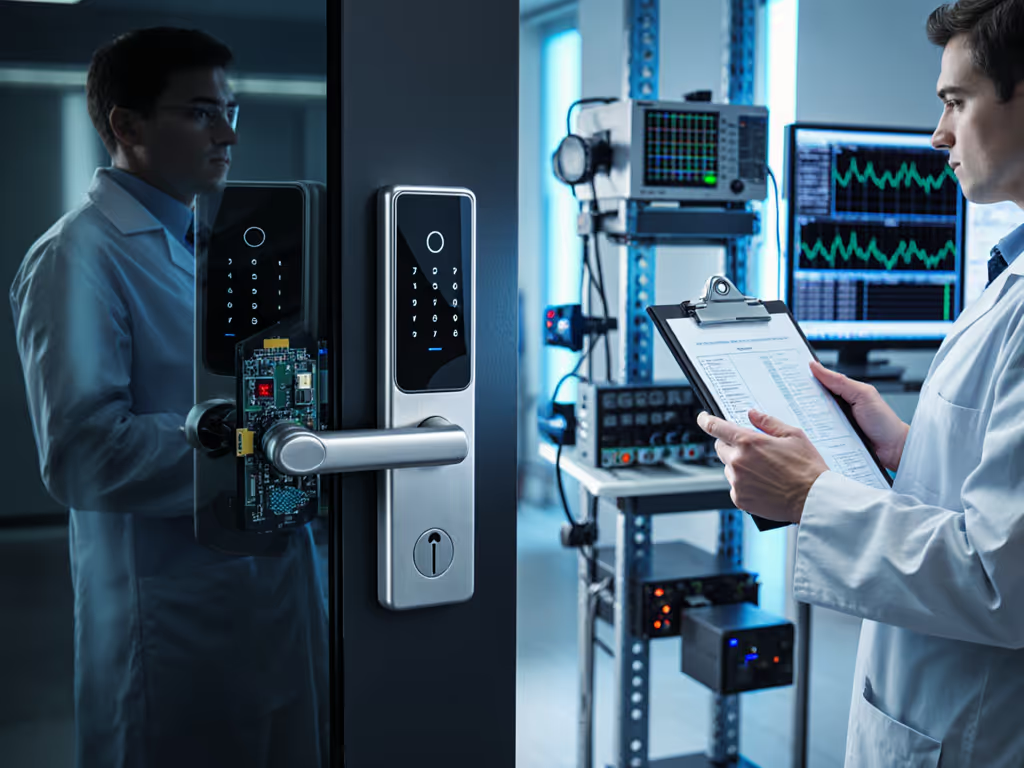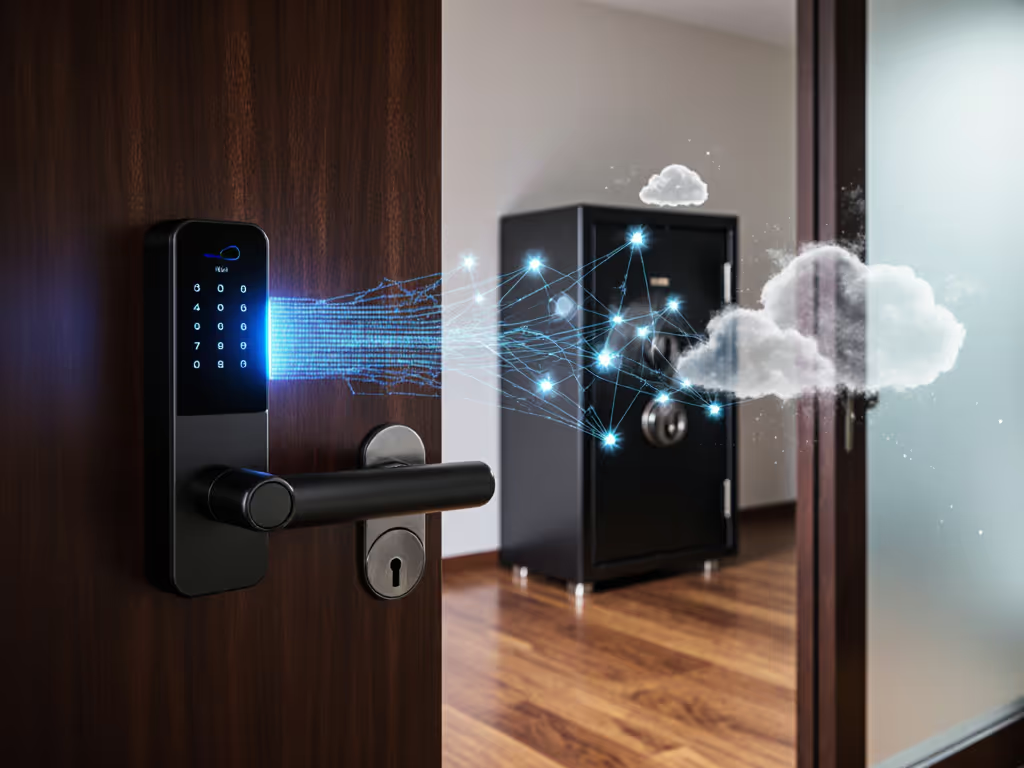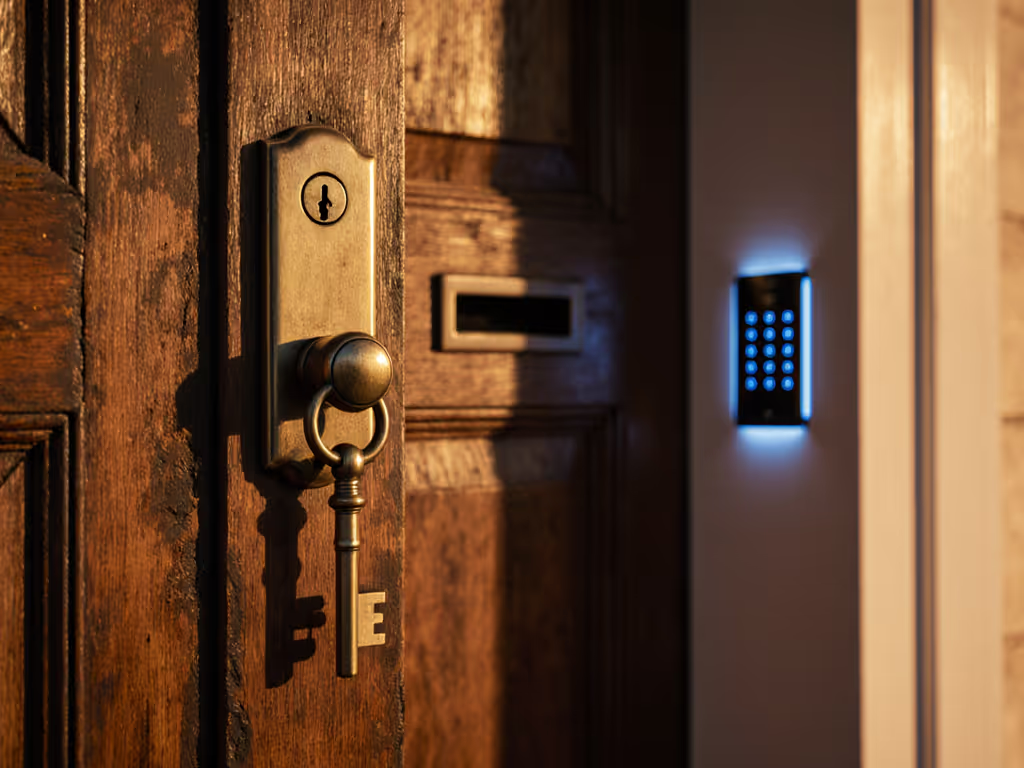
Smart Lock Maintenance Guide: Beyond Battery Replacement
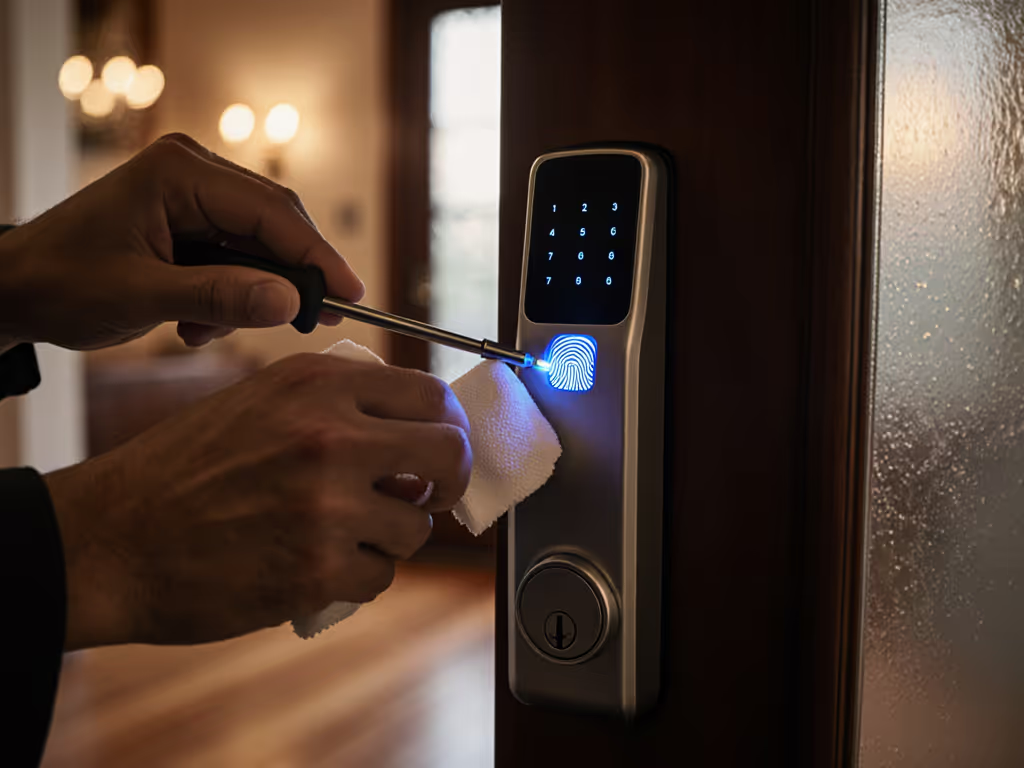
Most smart lock guides stop at battery replacement, treating your electronic guardian like a disposable gadget. But true smart lock maintenance requires understanding how these devices integrate into your home's heartbeat, not just when they beep for power. A comprehensive smart lock care guide recognizes that security isn't just about keeping intruders out; it's about ensuring your trusted guests and service providers can access your space reliably without compromising your control. Great hosting protects guest privacy and host control in equal measure.
As someone who navigated a holiday weekend where six guests were stranded by cloud platform limits while my locally-run unit welcomed arrivals seamlessly, I've learned that smart locks deserve holistic care. The real test of smart lock maintenance isn't when everything works, it's when your internet drops, your guest arrives early, or your cleaner needs access between bookings.
Beyond the Battery: The Hidden Maintenance Factors
While battery replacement is necessary, focusing solely on it ignores the full picture of smart lock longevity. If you do get caught with a dead lock, here’s an emergency 9V power fix guide to regain access safely. Consider these often-overlooked maintenance priorities:
Guests shouldn't be your QA, and your lock should work flawlessly under pressure, not when you're scrambling to fix it during arrival times.
Local dependency check
Test your smart lock's ability to function without internet. Can you still:
- Grant access through time-bound codes?
- Use local audit trails to verify last entry?
- Operate the physical key override without resistance?
These aren't fail-safes, they're your baseline functionality. Cloud-dependent locks fail when you need them most, while smart locks that work offline maintain cleaner and vendor access during outages.
Check-in window calibration
For hosts and multi-user households, verify that your scheduled access windows align with real-world use. A door that unlocks too early or late creates security gaps and guest frustration. Recalibrate your time-bound codes monthly, especially when daylight saving time shifts occur.
Smart Lock Cleaning Tips: Preserving Function Without Compromise
Dust, moisture, and fingerprints degrade performance over time, but improper cleaning does more harm than good. Follow these smart lock cleaning tips that protect both function and privacy:
Exterior maintenance
- Use a microfiber cloth dampened with distilled water (never chemical cleaners)
- Pay special attention to fingerprint sensors and keypad surfaces
- Avoid spraying liquids directly on the lock, apply to cloth first
Internal care
- For keyholes, use compressed air to dislodge debris (never liquids)
- Apply graphite powder sparingly for lubrication, never oil-based products
- If your smart lock has removable components, check manufacturer guidelines for safe disassembly
Remember: Every time you clean your lock, you're not just maintaining hardware, you're ensuring sensitive biometric data doesn't get compromised by residue buildup that affects sensor accuracy. For a deeper look at how different biometric methods perform in real homes, see our biometric door lock comparison.
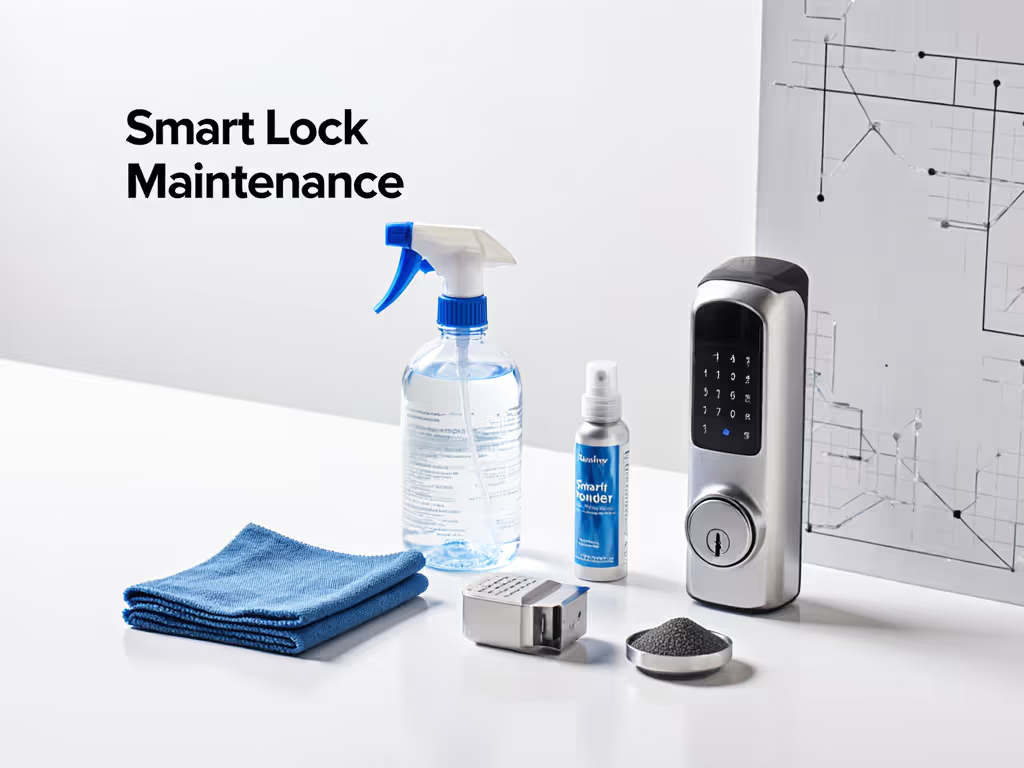
Firmware: The Overlooked Maintenance Layer
Smart lock firmware updates represent the most critical yet neglected aspect of maintenance. Unlike traditional locks, smart devices require ongoing software optimization, but not all updates serve your interests.
Update selectively, not automatically
Before accepting every firmware push:
- Review change logs for security patches versus "convenience" features that might increase cloud dependency
- Verify whether updates maintain local API access for Home Assistant or Apple Home
- Check if new versions preserve your existing time-bound codes and access schedules
Local-first update strategies
For privacy-conscious users:
- Schedule updates during off-peak hours when you're home to verify functionality
- Maintain a local backup of your current firmware version
- Test new features in a secondary lock before rolling out across your property
This approach ensures your smart lock remains a tool of empowerment rather than a vector for unexpected policy changes that disrupt your carefully orchestrated host workflows. For practical hardening steps and update hygiene, follow our smart lock security guide.
Mechanical Integrity: Keeping the Physical Lock Healthy
No amount of software sophistication matters if the physical mechanism fails. Regular mechanical checks prevent the most common smart lock frustrations:
- Alignment verification: Check monthly whether your door closes smoothly into the strike plate
- Bolt throw test: Ensure the deadbolt fully extends and retracts without resistance
- Torque assessment: Manually turn the lock to detect unusual resistance indicating motor strain
For STR hosts and property managers, this mechanical maintenance is crucial, guests shouldn't wrestle with a sticky lock while balancing luggage. If alignment issues persist, see our DIY smart lock installation guide for door prep and strike plate fixes. A well-maintained lock operates quietly and efficiently, contributing to that seamless arrival experience where guests glide in; your data stays home, not the cloud.
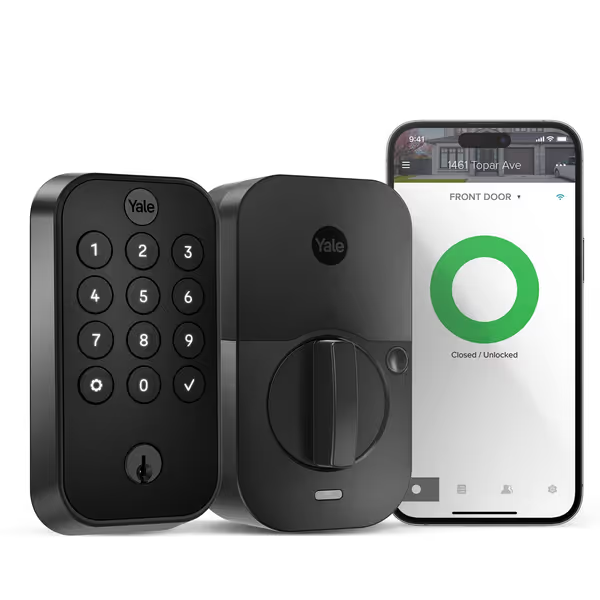
Yale Security Assure Lock 2 Deadbolt
Guest Access Maintenance: The Human Element
Your smart lock's true performance metric isn't technical specs, it's how reliably it serves people. Maintenance extends to your access management system:
Time-bound code hygiene
- Delete expired codes regularly to prevent system overload
- Verify that cleaner and vendor access windows expire precisely as scheduled
- Audit access logs monthly to detect unusual patterns
Check-in workflow testing
- Simulate guest arrivals at various times
- Test edge cases like early arrivals and late departures
- Verify message delivery for auto-expiring codes
This operational maintenance ensures your system doesn't force guests to become your de facto quality assurance team. Remember: when check-in fails, it's not the guest's problem to solve, it's a maintenance failure on your end.
Local Audit Trails: Your Maintenance Canary
Cloud-based logs disappear when connectivity fails, but local audit trails provide crucial maintenance insights you won't find elsewhere. Regularly review your local logs for:
- Failed access attempts that might indicate sensor issues
- Battery drain patterns correlating with specific usage
- Timing discrepancies in scheduled access events
A robust local audit trail transforms maintenance from reactive to predictive. Instead of waiting for a guest to report a malfunction, you'll spot trends indicating a sensor needs cleaning or a motor requires inspection.
Creating Platform-Agnostic Workflows
The smartest maintenance strategy future-proofs your investment against vendor changes. Build platform-agnostic workflows that:
- Store critical access codes in multiple locations (not just one app)
- Maintain physical key backups in secure locations
- Document your entire setup process for quick migration
This approach ensures that even if your lock manufacturer changes policies or discontinues support, your access system remains intact. Your maintenance routine should include quarterly verification of these backup systems.
Further Exploration
Smart lock maintenance isn't about preventing inevitable breakdowns, it's about designing systems resilient enough to handle them without disrupting your household rhythm. The most reliable locks aren't necessarily the most expensive or feature-rich; they're those aligned with your values of privacy, autonomy, and seamless operation.
To deepen your understanding:
- Research Matter over Thread compatibility for future-proof installations
- Join community forums focused on local-first smart home implementations
- Document your own maintenance patterns and share what works for your specific use case
As you refine your approach, remember the core principle: technology should serve your life, not the other way around. Your lock's true maintenance metric isn't how often it needs attention, but how consistently it disappears into the background of your daily routine, working perfectly without demanding your constant oversight.

